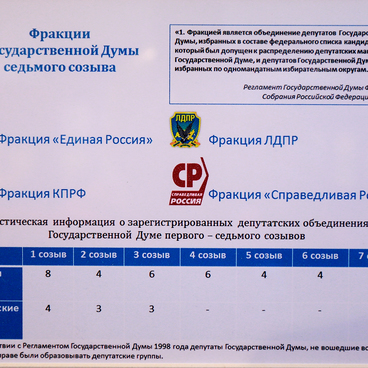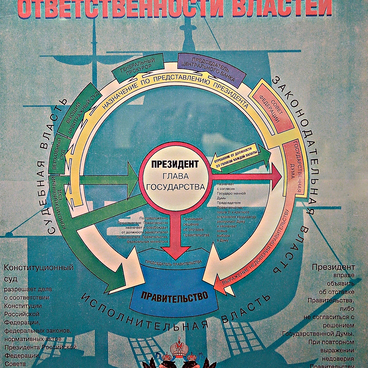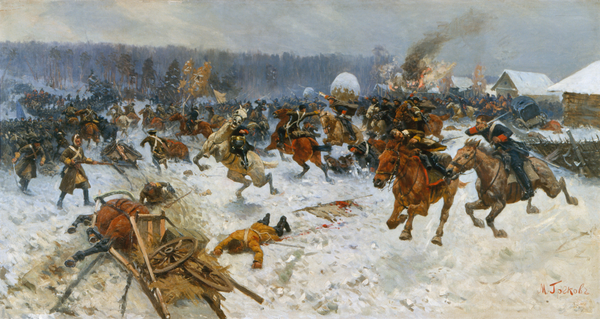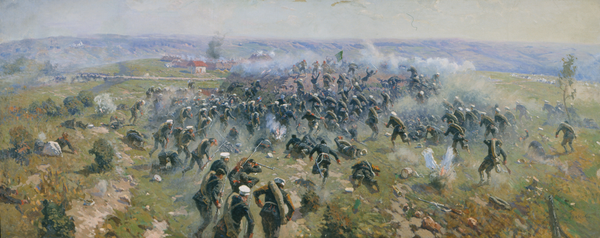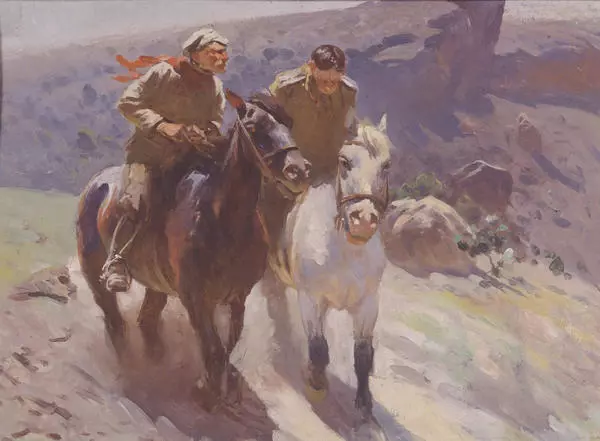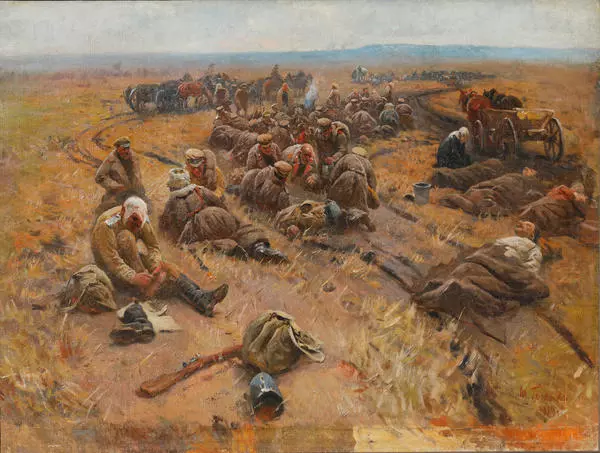Painter Mitrofan Grekov was born on a farm by the Don river. His first teacher was Kiriiak Kostandi, who was teaching at the Odessa School of Art. After school Grekov entered the St. Petersburg Academy of Arts, where his mentors were renowned artist Ilya Repin and a famous military painter Francois Roubaud. Grekov helped Roubaud to create large-scale panoramas The Defence of Sebastopol and The Borodino Battle.
Upon graduating from the Academy, the painter joined the Imperial Guard Atamansky Regiment. He fought in the battles of World War I fronts and continued to paint battle pieces.
When the Civil War broke out, Grekov joined the Red Army. In his autobiography, he recalled the start of his service there: ‘The developments were so exciting and fascinating that it was impossible not to paint. I spent several months in the immediate battle area, very closely to the battlefield. I had a chance to follow the combat movements of troops, to come to know the main characteristics of a civil war and Red Army units. Their internal message conjured up a romantic image of the observed episodes, which later became the themes of my paintings’. From that time on the Civil War figured prominently in his paintings.
Intense action was typical of his pictures. The artist often depicted fierce hand-to-hand fighting of soldiers entering a city, rushing pace of the Red Cavalry. At present Grekov is deemed one of the founders of Soviet battle painting.
The painter died in Sebastopol in 1934. He was then working there at the Perekop panorama.
The picture Tachanka. Munition Explosion displayed at the exhibition, became one of his most famous works. A tachanka is a kind of the horse-drawn transport, which became very popular at Civil War fronts. They were made of plain peasant carts: three or four horses were put to the cart, with a machine gun attached to its side. The crew usually included three men: a driver, a rifleman and his assistant. Unlike a wagon train cart, such light tachanka kept up with the cavalry and was able to provide accurate machine gun fire on the move.
Upon graduating from the Academy, the painter joined the Imperial Guard Atamansky Regiment. He fought in the battles of World War I fronts and continued to paint battle pieces.
When the Civil War broke out, Grekov joined the Red Army. In his autobiography, he recalled the start of his service there: ‘The developments were so exciting and fascinating that it was impossible not to paint. I spent several months in the immediate battle area, very closely to the battlefield. I had a chance to follow the combat movements of troops, to come to know the main characteristics of a civil war and Red Army units. Their internal message conjured up a romantic image of the observed episodes, which later became the themes of my paintings’. From that time on the Civil War figured prominently in his paintings.
Intense action was typical of his pictures. The artist often depicted fierce hand-to-hand fighting of soldiers entering a city, rushing pace of the Red Cavalry. At present Grekov is deemed one of the founders of Soviet battle painting.
The painter died in Sebastopol in 1934. He was then working there at the Perekop panorama.
The picture Tachanka. Munition Explosion displayed at the exhibition, became one of his most famous works. A tachanka is a kind of the horse-drawn transport, which became very popular at Civil War fronts. They were made of plain peasant carts: three or four horses were put to the cart, with a machine gun attached to its side. The crew usually included three men: a driver, a rifleman and his assistant. Unlike a wagon train cart, such light tachanka kept up with the cavalry and was able to provide accurate machine gun fire on the move.
